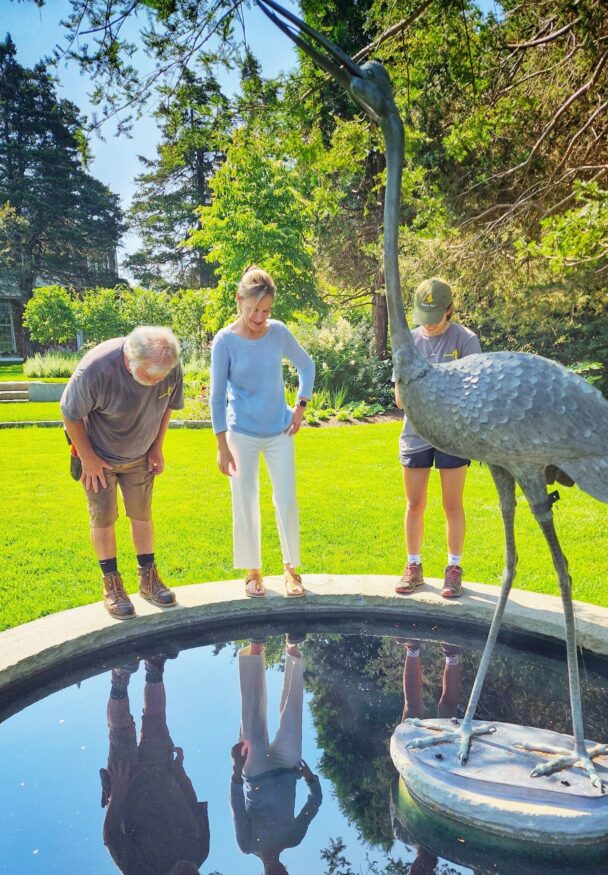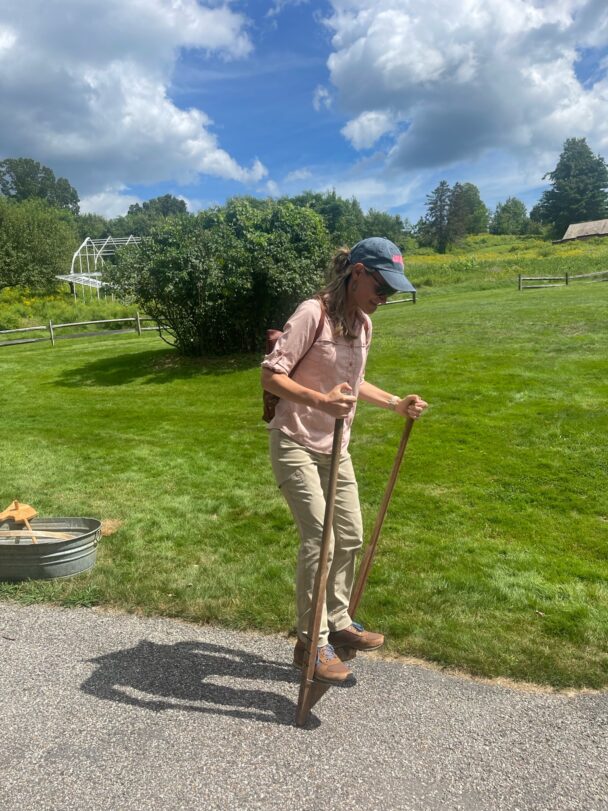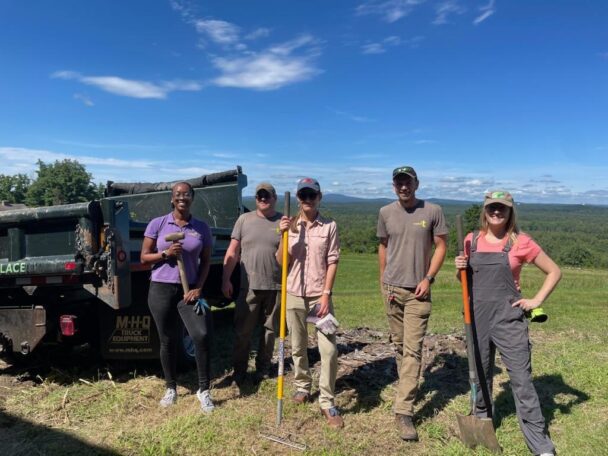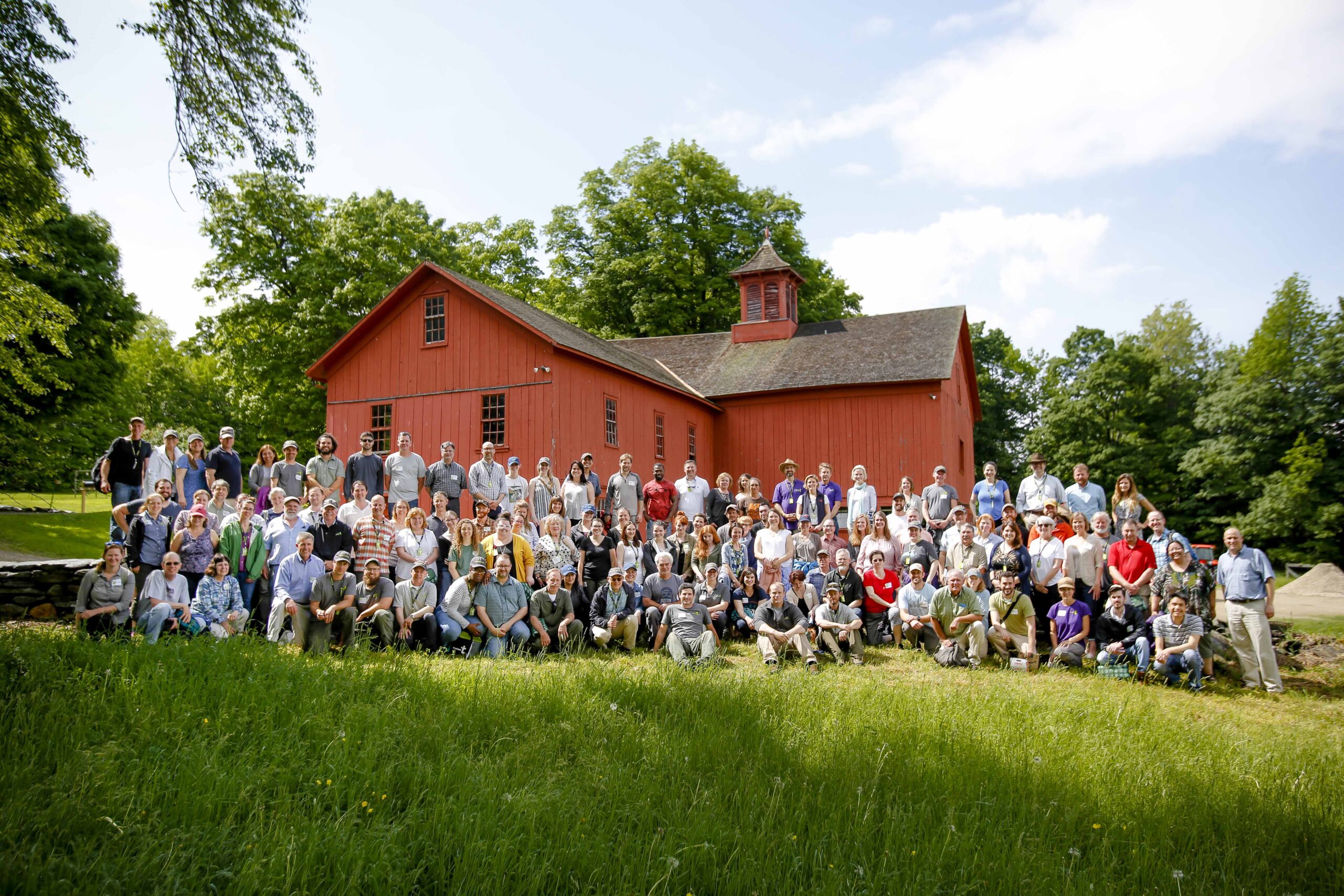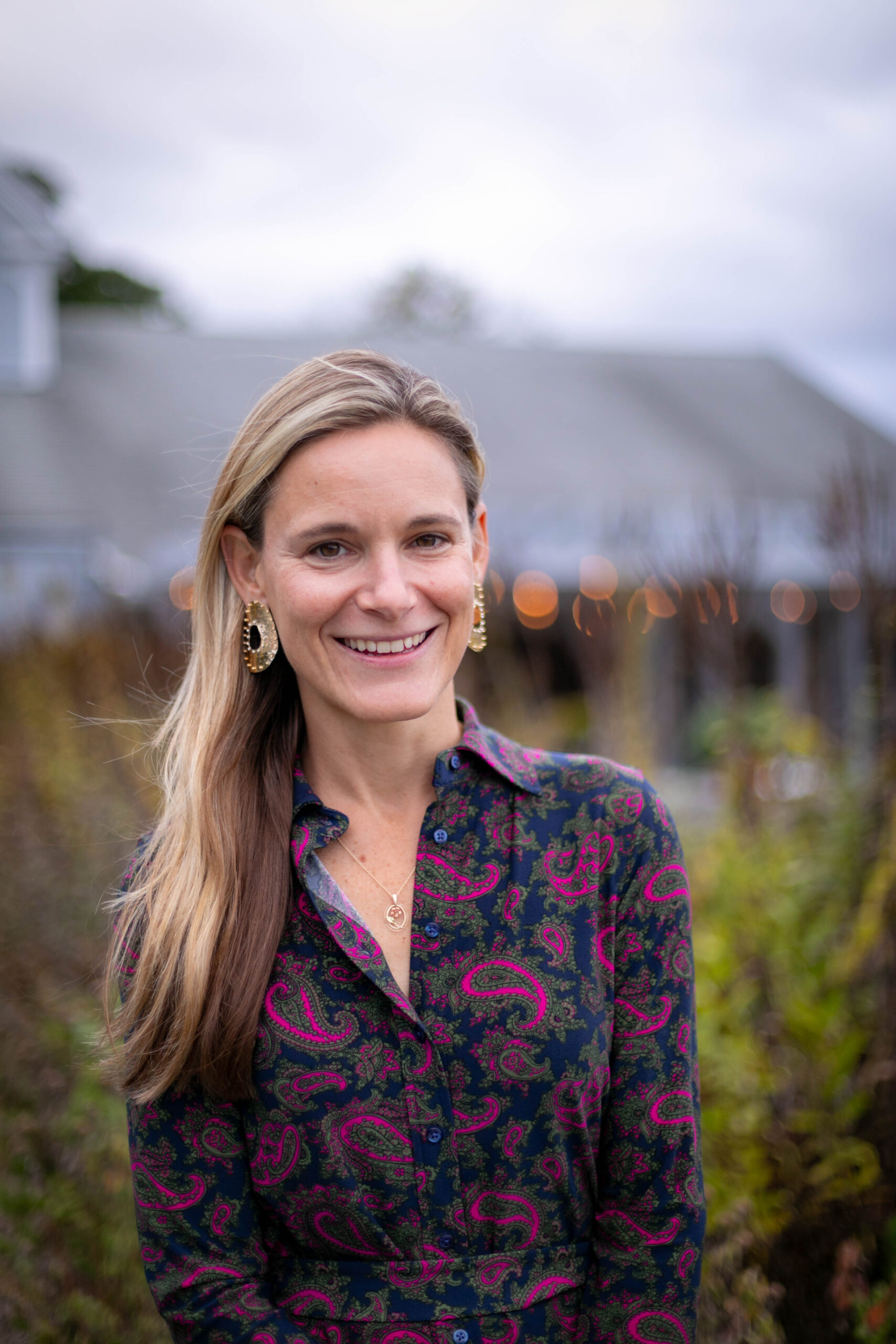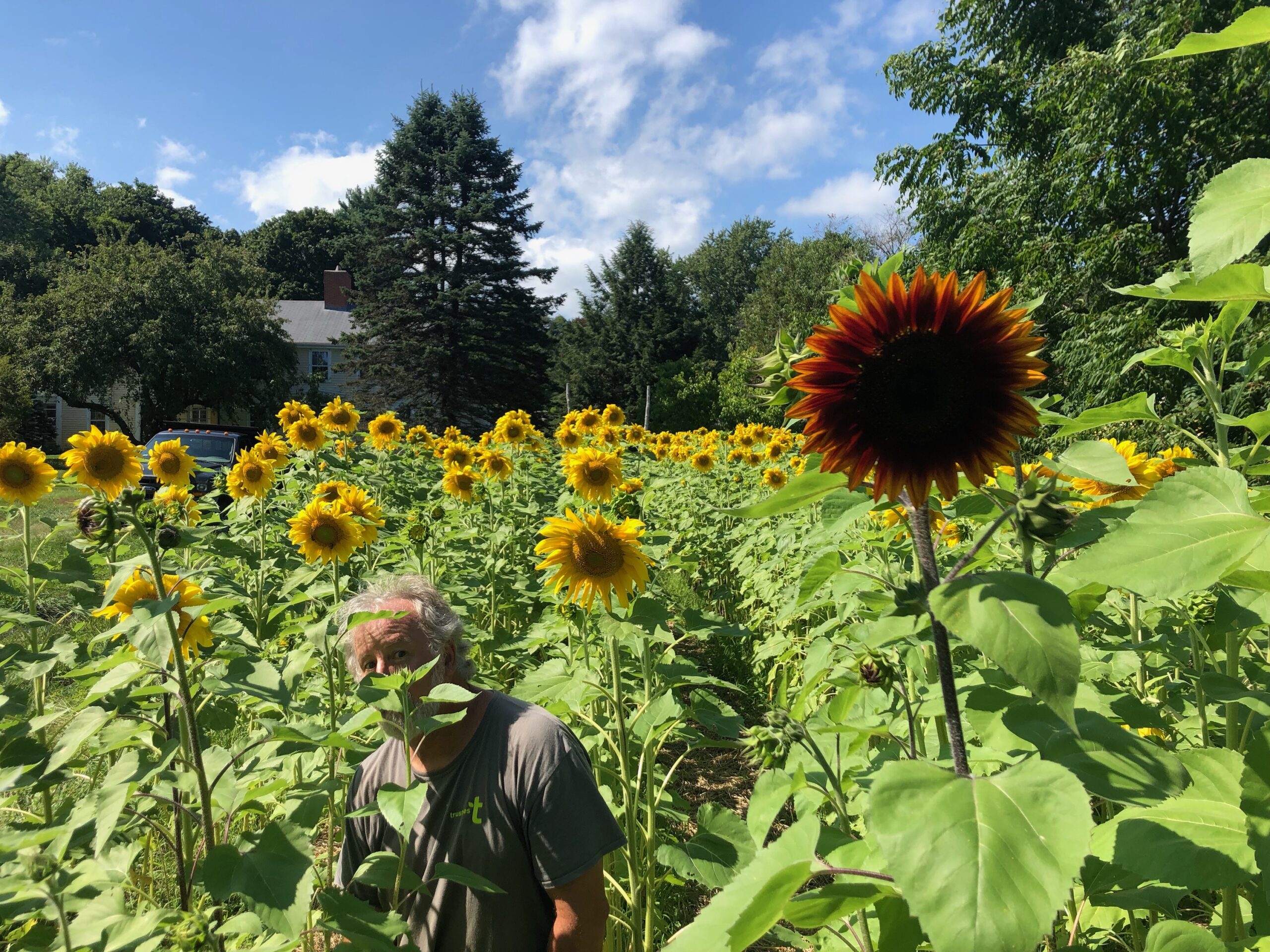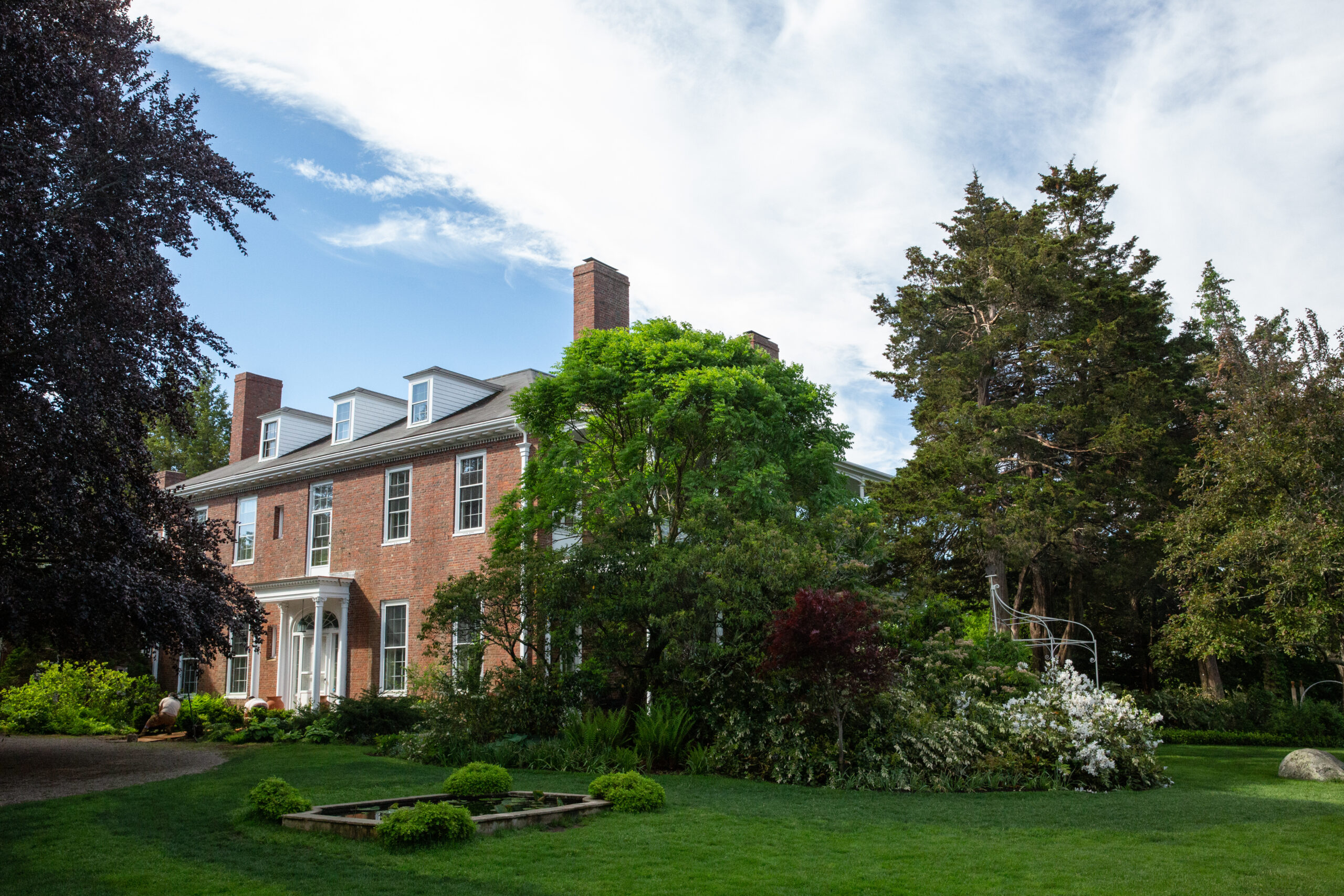This summer, The Trustees named Katie Theoharides as its next President and CEO. Katie brings a background in ecology and climate science to her longstanding career in environmental leadership and land conservation, key pillars of The Trustees’ mission. We met with Katie at Long Hill in Beverly to learn more about her vision for the organization, her passion for these special places and her leadership style.
Where are you from?
I grew up in a little town in the Pioneer Valley called Hampden. Now I live in Arlington, which is outside of Boston with my family and husband.
What were you doing professionally before you came to The Trustees?
Before I came to The Trustees, I was working on climate change and conservation policy, and have been focused on that work for the last 20 years. My most recent long-term role was with the Commonwealth of Massachusetts, where I worked as a cabinet official on energy and environmental issues and spent a lot of time working to build climate resiliency at the community level all across the state.
What made this the right opportunity for you at this point in your career?
This opportunity at The Trustees spoke to my passion and what I feel is my calling, which is connecting people to nature and to the importance of taking environmental action to protect our special landscapes, to work on climate change solutions, and to preserve our shared history here in the Commonwealth.
I think The Trustees, as an organization, really embodies something I feel very strongly about, which is that if people are not connected and don’t know and love these landscapes and special places, there won’t be that desire to protect our natural world going into the future. The Trustees works by connecting people to special places through arts and agriculture and history, and a shared reverence for the beauty of the natural world. Bringing that all together and having the chance to be part of a team and an organization that is leading that work really was a perfect opportunity to help protect our special places for everyone forever and connect more people to our mission.
As you step into this leadership role, tell us about a leader who inspires you.
One of the leaders I find most inspirational is Gina McCarthy. She’s from Massachusetts and is the former EPA administrator for President Biden. She also served in state government here in Massachusetts and in Connecticut for a number of years. Gina is someone who cares passionately about environmental issues and connecting those issues to impacts on people and families and communities all across her area of work, which is focused on environmental quality and how that can affect children and their families. Gina is also filled with joy for her work. She is funny and personable and she’s kind, and I think she exemplifies both the passionate qualities that a leader has to bring to taking on the hard issues, along with a really humanitarian side to working with people.
How would you describe your own leadership style?
My leadership style is informed by listening and trying to solve problems with teams. I am passionate about understanding the experience and the expertise of my staff and what they are passionate about, and how we can build a strong strategic mission together. I like to remove obstacles from the team’s success and understand what the challenges and opportunities are across an organization as big as The Trustees. I believe that really matters. I think we can be tough on the issues, but then be kind to each other and work collaboratively and effectively as one team to take on the hard challenges together.
Do you have a favorite Trustees property?
I’m not sure as the President and CEO that I’m allowed to have a favorite! But there is something for everyone here at The Trustees, and that’s what makes it so special. We have beautiful beaches, unique hiking trails, waterfalls, and mountaintops to explore. We have working farms where kids can get engaged with farm animals and with planting out in our fields, and we have historic homes and cultural and art institutions. It’s a really full portfolio that invites our visitors to connect with our natural and cultural landscapes in many different ways.
We’re doing this interview at Long Hill in Beverly, which is a beautiful home and garden with walking trails. Here, I’m finding myself thinking about the Sedgwick women who built and designed and lovingly cared for this garden. And thinking about the family events and times they must have spent walking in the garden, and that connection to today when we’re able to host things like weddings and gatherings here on this property. It’s a really special place and a delight as a gardener to spend some time in today.
If you can’t have a favorite property, do you have a favorite season?
I love the fact that New England has seasons, and that each season has its own flavor. But if I had to choose one, my favorite season is the fall. I love the crisp morning air, going apple picking, and the colors the leaves put on. And I even love as the fall starts to turn into winter and you smell the first snow—the landscape becomes really bare and you can see the shape of the hills and the colors of the marsh, and you get that first snowfall.
Which property are you excited to explore next?
I am really looking forward to exploring Notchview, which in the winter is a cross-country skiing site, and I love cross-country skiing. I’ve been to Notchview in the winter but I have not had the opportunity to visit at other times of the year. And not only is it a great place to take a hike, but it’s also on our list of great places to bring a picnic to! Our Western Massachusetts portfolio is one that is very exciting and offers a number of ways to get out and enjoy the crisp fall and early winter weather—including our newest reservation, Becket Quarry, which has seven miles of hiking trails around an old quarry site.
What is your vision for The Trustees?
I am thinking a lot about the future of The Trustees right now and spending time during my transition to listen and learn from our team, from our governance, and from our supporters across the state. It’s too early to have a fully-fledged vision because we will be doing that work of engaging all of our strong supporters of The Trustees in building the vision for the future.
But I’ve already seen some clear strengths of the organization that I think we can lean into. The first is continuing to accelerate the pace of land conservation here in Massachusetts, and that means both large tracts of resilient landscapes that protect wildlife and biodiversity, as well as urban parks and areas in more populated locations that can offer opportunities to get outside to our communities. Here in Massachusetts, we lose 13 and a half acres of land every day to development, so it’s really important to continue this work that The Trustees has built such a strong track record on.
We also have a real opportunity to bring people together around climate change solutions. I think this is something we can build real expertise in, so we can use our properties as ways to solve climate challenges, whether it’s looking at how to retrofit a historic building or how to build a more resilient coast. I hope in the future our properties become engines of climate hope.
We’re also at a moment in time that really calls for us to ensure that all communities have access to these outdoor resources, that we are welcoming to more diverse and inclusive audiences, and that all people across the Commonwealth and all of our visitors to the state feel welcomed into our properties. That’s something we’re already doing and I want to build on that work.
The Trustees has been around for 130 years and it’s really important that we’re working on the sustainability of the organization for the next hundred years so we can continue to deliver on this mission and support members and visitors across our properties and throughout our landscapes and special places.
The full interview is available in the Fall/Winter issue of Special Places.
